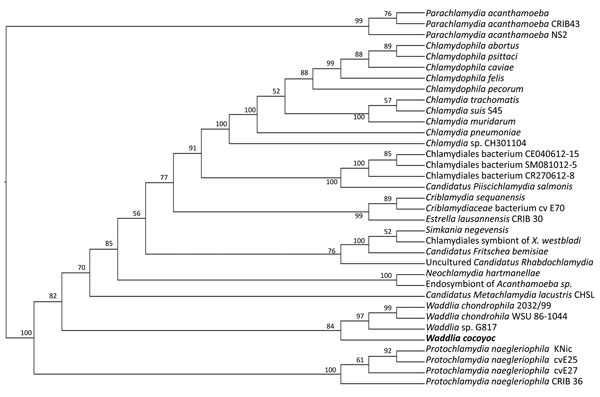Volume 21, Number 12—December 2015
Dispatch
Novel Waddlia Intracellular Bacterium in Artibeus intermedius Fruit Bats, Mexico
Figure 2

Figure 2. Phylogenetic relationships of bacterium newly identified in Artibeus intermedius fruit bats in Mexico (Waddlia cocoyoc, bold text), to other Chlamydiales. 16S sequences were used to infer relationships. X. westbladi, Xenoturbella westbladi.
1Current affiliate: Institut Pasteur, Paris, France.
Page created: November 17, 2015
Page updated: November 17, 2015
Page reviewed: November 17, 2015
The conclusions, findings, and opinions expressed by authors contributing to this journal do not necessarily reflect the official position of the U.S. Department of Health and Human Services, the Public Health Service, the Centers for Disease Control and Prevention, or the authors' affiliated institutions. Use of trade names is for identification only and does not imply endorsement by any of the groups named above.